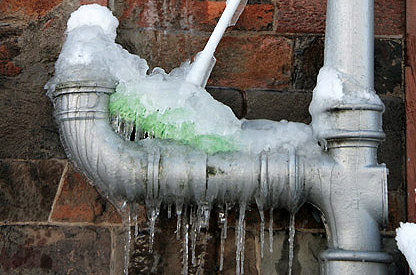Important Tips to Prevent Frozen Pipes in Winter
Important Tips to Prevent Frozen Pipes in Winter
Blog Article
We've noticed this great article pertaining to How To Avoid Freezing Pipes below on the net and accepted it made sense to share it with you on this page.

Cold weather can damage your plumbing, specifically by freezing pipelines. Below's exactly how to prevent it from taking place and what to do if it does.
Intro
As temperatures drop, the danger of icy pipelines increases, potentially leading to expensive repairs and water damage. Recognizing just how to avoid frozen pipelines is important for property owners in cool environments.
Comprehending Frozen Pipelines
What creates pipes to ice up?
Pipes freeze when subjected to temperatures listed below 32 ° F (0 ° C) for extended durations. As water inside the pipes freezes, it broadens, putting pressure on the pipe walls and possibly creating them to burst.
Dangers and problems
Icy pipes can cause water supply disruptions, property damages, and expensive fixings. Burst pipes can flooding homes and cause considerable structural damage.
Signs of Frozen Pipes
Determining frozen pipes early can stop them from breaking.
How to recognize icy pipes
Look for lowered water circulation from taps, uncommon odors or noises from pipes, and visible frost on exposed pipes.
Prevention Tips
Insulating prone pipelines
Wrap pipes in insulation sleeves or use warmth tape to protect them from freezing temperature levels. Focus on pipelines in unheated or outside locations of the home.
Heating techniques
Keep indoor areas effectively heated up, specifically locations with plumbing. Open up cabinet doors to enable cozy air to circulate around pipelines under sinks.
Protecting Outdoor Plumbing
Yard hose pipes and outdoor taps
Separate and drain pipes garden hoses before winter. Mount frost-proof spigots or cover outdoor faucets with protected caps.
What to Do If Your Pipes Freeze
Immediate actions to take
If you suspect frozen pipelines, maintain faucets open up to ease pressure as the ice thaws. Use a hairdryer or towels taken in warm water to thaw pipelines slowly.
Long-Term Solutions
Architectural modifications
Take into consideration rerouting pipes far from exterior walls or unheated areas. Include extra insulation to attics, basements, and crawl spaces.
Updating insulation
Purchase top notch insulation for pipes, attic rooms, and wall surfaces. Correct insulation helps maintain consistent temperature levels and lowers the risk of icy pipes.
Verdict
Protecting against frozen pipelines calls for proactive steps and fast reactions. By understanding the reasons, indications, and preventive measures, property owners can safeguard their pipes during cold weather.
5 Ways to Prevent Frozen Pipes
Drain Outdoor Faucets and Disconnect Hoses
First, close the shut-off valve that controls the flow of water in the pipe to your outdoor faucet. Then, head outside to disconnect and drain your hose and open the outdoor faucet to allow the water to completely drain out of the line. Turn off the faucet when done. Finally, head back to the shut-off valve and drain the remaining water inside the pipe into a bucket or container. Additionally, if you have a home irrigation system, you should consider hiring an expert to clear the system of water each year.
Insulate Pipes
One of the best and most cost-effective methods for preventing frozen water pipes is to wrap your pipes with insulation. This is especially important for areas in your home that aren’t exposed to heat, such as an attic. We suggest using foam sleeves, which can typically be found at your local hardware store.
Keep Heat Running at 65
Your pipes are located inside your walls, and the temperature there is much colder than the rest of the house. To prevent your pipes from freezing, The Insurance Information Institute suggests that you keep your home heated to at least 65 degrees, even when traveling. You may want to invest in smart devices that can keep an eye on the temperature in your home while you’re away.
Leave Water Dripping
Moving water — even a small trickle — can prevent ice from forming inside your pipes. When freezing temps are imminent, start a drip of water from all faucets that serve exposed pipes. Leaving a few faucets running will also help relieve pressure inside the pipes and help prevent a rupture if the water inside freezes.
Open Cupboard Doors
Warm your kitchen and bathroom pipes by opening cupboards and vanities. You should also leave your interior doors ajar to help warm air circulate evenly throughout your home.

I hope you liked our part on Winter Plumbing Precautions: Preventing Frozen Pipes. Thanks a lot for finding the time to read through our posting. Sharing is nice. Helping others is fun. Thank you so much for taking the time to read it.
Rates Report this page